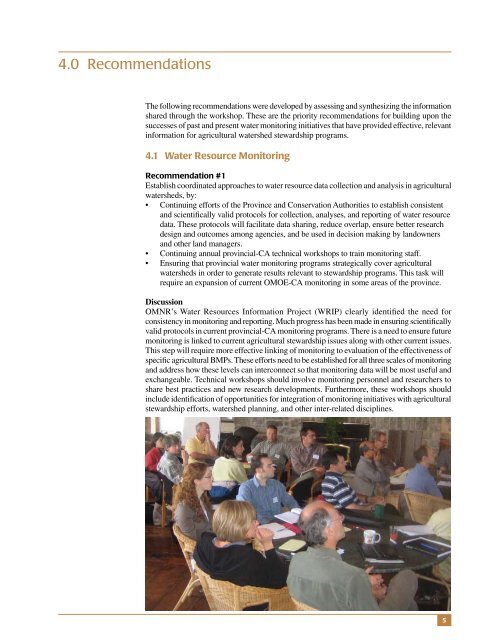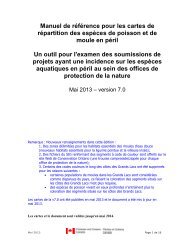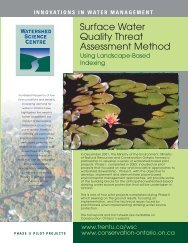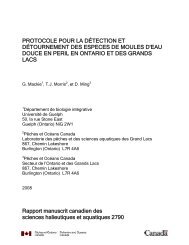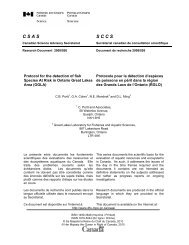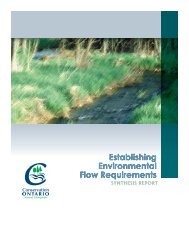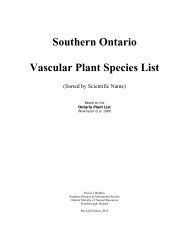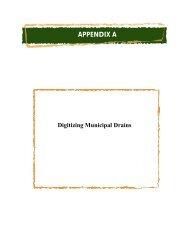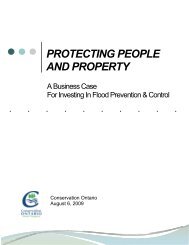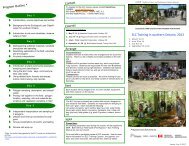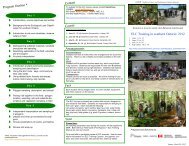kayak - Conservation Ontario
kayak - Conservation Ontario
kayak - Conservation Ontario
You also want an ePaper? Increase the reach of your titles
YUMPU automatically turns print PDFs into web optimized ePapers that Google loves.
4.0 RecommendationsThe following recommendations were developed by assessing and synthesizing the informationshared through the workshop. These are the priority recommendations for building upon thesuccesses of past and present water monitoring initiatives that have provided effective, relevantinformation for agricultural watershed stewardship programs.4.1 Water Resource MonitoringRecommendation #1Establish coordinated approaches to water resource data collection and analysis in agriculturalwatersheds, by:• Continuing efforts of the Province and <strong>Conservation</strong> Authorities to establish consistentand scientifically valid protocols for collection, analyses, and reporting of water resourcedata. These protocols will facilitate data sharing, reduce overlap, ensure better researchdesign and outcomes among agencies, and be used in decision making by landownersand other land managers.• Continuing annual provincial-CA technical workshops to train monitoring staff.• Ensuring that provincial water monitoring programs strategically cover agriculturalwatersheds in order to generate results relevant to stewardship programs. This task willrequire an expansion of current OMOE-CA monitoring in some areas of the province.DiscussionOMNR’s Water Resources Information Project (WRIP) clearly identified the need forconsistency in monitoring and reporting. Much progress has been made in ensuring scientificallyvalid protocols in current provincial-CA monitoring programs. There is a need to ensure futuremonitoring is linked to current agricultural stewardship issues along with other current issues.This step will require more effective linking of monitoring to evaluation of the effectiveness ofspecific agricultural BMPs. These efforts need to be established for all three scales of monitoringand address how these levels can interconnect so that monitoring data will be most useful andexchangeable. Technical workshops should involve monitoring personnel and researchers toshare best practices and new research developments. Furthermore, these workshops shouldinclude identification of opportunities for integration of monitoring initiatives with agriculturalstewardship efforts, watershed planning, and other inter-related disciplines.5


